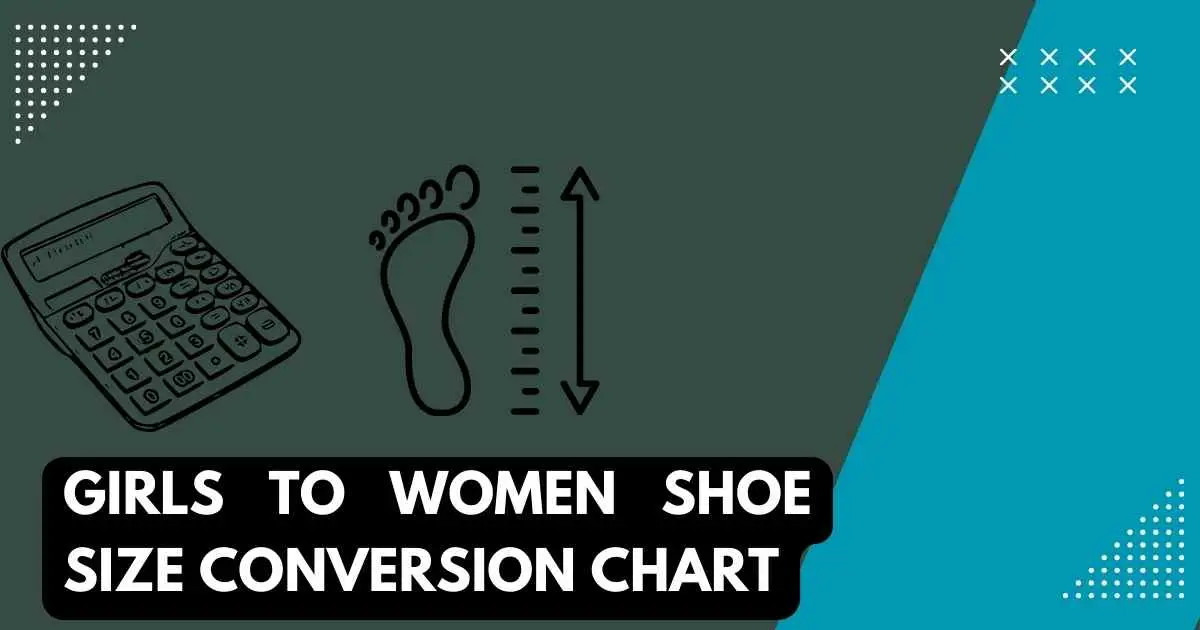Embarking on the journey of finding the perfect pair of shoes can be exciting and challenging, especially for young fashion enthusiasts. Whether you’re a parent helping your daughter navigate the world of shoe shopping or a young shopper yourself, understanding how girls’ shoe sizes translate into women’s sizes is essential. In this comprehensive guide, we’ll delve into the intricacies of shoe sizing, explore the transition from girls’ to women’s sizes, and provide a detailed conversion chart to simplify your shopping experience.
Understanding Shoe Sizes
Shoe sizes are a standardized system to ensure footwear fits comfortably and securely, minimizing the risk of discomfort or injury. Before delving into the specifics of girls’ and women’s sizes, it’s essential to understand the fundamentals of shoe sizing and how it varies across regions and scales.
Girls’ Shoe Sizes
Girls’ shoe sizes cater to younger individuals with developing feet, ranging from toddler sizes (T) to youth sizes (Y). While the sizing scale may vary slightly between countries, it generally follows a sequential numbering system, with each size representing a specific foot length. Understanding the nuances of girls’ shoe sizes is crucial for parents and young shoppers alike.
Women’s Shoe Sizes
Women’s shoe sizes accommodate adult females and are standardized across most regions, making it easier to find the right fit. Women’s sizes typically range from size 5 to size 12 or higher, with half sizes available for a more precise fit. As young girls transition into teenagers and eventually adults, understanding how their shoe size evolves is essential for a seamless shopping experience.
Transitioning from Girls’ to Women’s Sizes
The transition from girls’ sizes to women’s sizes marks a significant milestone in a young girl’s shoe shopping journey. As feet undergo changes in size and shape, it’s crucial to understand how to navigate this transition effectively. Factors such as genetics, hormonal changes, and lifestyle habits can influence changes in shoe size, making it essential to adapt accordingly.
Factors Affecting Shoe Size
Several factors can impact changes in shoe size as individuals transition from childhood to adulthood. Genetics, hormonal changes, weight fluctuations, and lifestyle factors such as physical activity and shoe selection all play a role in determining the appropriate shoe size. By considering these factors, shoppers can make informed decisions when selecting footwear.
Using a Conversion Chart
A conversion chart serves as a valuable tool for individuals transitioning from girls’ to women’s shoe sizes. By providing a systematic comparison between the two sizing scales, a conversion chart simplifies the shopping process and eliminates guesswork. Whether shopping online or in-store, referencing a conversion chart ensures consistency in sizing and enhances the overall shopping experience.
How to Use a Conversion Chart
Using a conversion chart is simple and straightforward, making it accessible to shoppers of all ages. By following a few easy steps, shoppers can identify their corresponding women’s shoe sizes based on their current girls’ sizes. With a conversion chart on hand, finding the perfect fit has never been easier.
| Girls’ Size | Women’s Size |
|---|---|
| 1 | 3.5 |
| 2 | 4.5 |
| 3 | 5.5 |
| 4 | 6.5 |
| 5 | 7.5 |
| 6 | 8.5 |
| 7 | 9.5 |
| 8 | 10.5 |
| 9 | 11.5 |
| 10 | 12.5 |
| 11 | 13.5 |
| 12 | 14.5 |
| 13 | 15.5 |
Benefits of Using a Conversion Chart
Utilizing a conversion chart offers several benefits for shoppers transitioning from girls’ to women’s sizes. These include:
- Convenience: Conversion charts provide a quick and convenient way to find your women’s shoe size based on your current girls’ size, saving time and effort.
- Accuracy: Conversion charts are designed to provide accurate size comparisons, minimizing the risk of selecting the wrong size and the need for returns or exchanges.
- Confidence: By using a conversion chart, shoppers can shop with confidence, knowing they are selecting the appropriate size for their feet, leading to increased satisfaction with their purchases.
- Versatility: Conversion charts can be used both online and in-store, making them a versatile tool for all types of shopping experiences.
Tips for Finding the Right Fit
While conversion charts serve as a helpful starting point, there are additional factors to consider when finding the perfect fit:
- Measure Your Feet: Regularly measure both the length and width of your feet to ensure accuracy, as feet can change in size over time.
- Consider Shoe Styles: Different shoe styles may fit differently, so try on various styles to find the most comfortable option for your feet.
- Account for Socks: If wearing socks with your shoes, consider their thickness when selecting a size, opting for a slightly larger size if necessary.
- Walk Around: Take a few steps when trying on shoes to assess fit and comfort, paying attention to any areas of tightness or rubbing.
- Consult Customer Reviews: Read customer reviews to gain insights into the fit and sizing of specific shoe styles, helping you make informed decisions.
Conclusion
Navigating the transition from girls’ to women’s shoe sizes doesn’t have to be daunting. Armed with the knowledge provided in this guide and a handy conversion chart, finding the perfect fit is within reach. Whether you’re a young shopper embarking on your shoe-shopping journey or a parent guiding your daughter through the process, understanding how girls’ shoe sizes convert to women’s sizes ensures a seamless and enjoyable shopping experience. So, lace up your shoes and step confidently into the world of fashion!



Leave a Reply